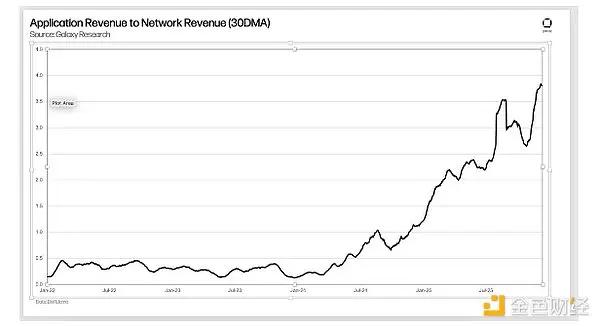
One of the core promises of Web3 has always been control. Control over your identity, your assets, your data. But for most people, it still feels disconnected from the internet they actually use.
They shop on Amazon, get paid through banks, stream on Spotify, log in with Google. All of that activity, that data, lives in Web2.
And Web3 can’t see any of it.
This isn’t a limitation of blockchains or smart contracts. It’s a limitation of access. Web3 has no way to tap into the real-world data that defines our digital lives — at least, not without relying on centralized intermediaries or exposing sensitive information.
Until we can bridge that gap in a way that’s trustless and private, blockchain will remain a parallel system that is powerful, but isolated.
Why Web3 Hasn’t Broken Through
We interact online constantly, through banks, social media, streaming platforms, government portals. But all of this happens inside tightly controlled ecosystems. Our digital identities are scattered across platforms, each one holding a slice of our lives: a bank statement here, a passport scan there, a LinkedIn work history somewhere else.
This fragmentation creates two fundamental problems:
- Data silos: Your online identity is split across platforms, each with its own rules and permissions.
- Ownership deficit: You don’t actually own your data. At best, you have access to it, access that can be revoked, restricted, or monetized by someone else.
These problems show up in the friction we face every day. Want to prove your income? You’ll probably have to hand over a full bank statement. Need to verify your address? Prepare to upload an entire utility bill. These systems assume full transparency is the only way to establish trust, because there’s no infrastructure for selective, verifiable disclosure.
Web3 promised to give users control, but so far it hasn’t delivered on this front, at least not for everyday, Web2-originated data.
The Missing Piece: Verifiable Web2 Data
This is the real bottleneck: enabling Web3 applications to tap into the data we already generate without compromising user privacy or introducing new trusted intermediaries.
There are two key challenges:
- Verifiability: How can we cryptographically prove that data from a Web2 source is legitimate, without relying on a centralized oracle or API?
- Privacy: How can we prove only what’s necessary? without exposing the full data behind it?
Chainlink and other oracle providers have addressed part of the verifiability problem, particularly for public data like asset prices or weather conditions. But personal, user-specific data like financial records, qualifications, identity credentials requires a different approach. These data points live behind logins, inside encrypted channels, and they weren’t designed to be extracted or shared.
That’s where zkTLS comes in.
What is zkTLS?
Most of the internet runs on TLS (Transport Layer Security), the encryption protocol that powers HTTPS. It secures roughly 95% of all web traffic. When you access a website, TLS ensures your communication is encrypted and safe from tampering.
zkTLS, or zero-knowledge TLS, builds on this foundation by enabling something radically new: it allows users to extract and prove specific facts from Web2 data streams, without revealing the full content and without needing to trust a third party.
This unlocks two critical capabilities:
- On-chain verifiability: zkTLS can prove that data came from a specific Web2 source and hasn’t been altered.
- Selective disclosure: It enables proving specific attributes, like “I make more than $80,000 a year”, without revealing your actual bank statement.

How does it work? In simple terms:
- It captures the encrypted TLS session between a user and a website.
- It generates a zero-knowledge proof attesting to a specific claim (e.g. that a certain value appeared in the response).
- That proof can then be verified on-chain, trustlessly and privately.

This avoids the need to expose data to third parties or trust a centralized server to attest to it. Instead, trust is baked into the cryptographic proof itself.
This isn’t theory. zkTLS implementations are already being tested and deployed across consumer and DeFi use cases, pointing to a near future where verifiable Web2 data becomes a default input for Web3 applications.
How zkTLS Works
Not all zkTLS implementations are the same. Depending on what matters most, speed, decentralization, or simplicity, different approaches shine in different contexts. Here are three common architectures:

Real-World Applications: Where zkTLS Changes Everything
zkTLS doesn’t just optimize data handling, it redefines the boundary between Web2 and Web3. By enabling trust-minimized, private access to off-chain data, it allows applications to integrate real-world context without compromising on privacy or decentralization.
Here’s how it’s being used across different sectors today.
Financial Services
Most DeFi protocols still rely on overcollateralization due to a lack of trusted identity and financial data on-chain. zkTLS makes it possible to verify income, cash flow, or account history without exposing sensitive documents.

- 3Jane is building a peer-to-pool credit protocol offering real-time, unsecured USDC credit lines to traders, farmers, and businesses. Borrowers connect their wallet and Web2 financial data via Plaid, unlocking credit based on verifiable proofs across DeFi, CEX, and banks with no collateral needed.
- Stormbit supports flexible, peer-to-peer lending markets where borrowers can prove income or account activity privately, using zkTLS to unlock capital.
- RWA tokenization projects are beginning to verify land or property ownership through government portals using zkTLS, enabling on-chain assetization with compliance.
- zkP2P is building decentralized fiat-to-crypto onramps that let users prove Venmo, Wise, or Revolut payments using zkTLS for a process that no longer requires KYC nor intermediaries, and with instant settlement.
These systems expand access to capital, bring creditworthiness on-chain, and create compliant bridges between TradFi and crypto.
Consumer Platforms
In Web2, access to digital goods, subscriptions, and purchase history is locked behind centralized APIs. zkTLS makes that data portable and provable without asking platforms for permission.

- CSFloat lets users verify ownership of Counter-Strike skins and collectibles through Steam data, enabling secure P2P trades without involving the platform.
- zkTLS is also being used to prove access to gated communities, subscriptions, or premium content with no account linking or API access required.
- In e-commerce, users can prove past purchases or loyalty program activity to unlock cashback, token rewards, or resale markets.
Now imagine proving you’re a Spotify subscriber to access a token-gated music DAO, or verifying a past purchase from Farfetch to unlock resale rights or exclusive drops — all without linking your account or revealing personal data. zkTLS makes it possible to build experiences where your Web2 activity becomes a key, not a liability.
Identity & Reputation
Digital identity today is fragmented and overexposed. Proving who you are often means sharing everything. zkTLS changes that by allowing selective disclosure from trusted sources.

- zkMe acts as a privacy-preserving identity oracle, turning documents and data from Web2 platforms into selective, on-chain proofs.
- Zeru powers zScore, a cross-app reputation layer on Base. It verifies things like credit score, location, or Uber history, without KYC, so users can build verifiable profiles that travel across apps and ecosystems.
- Icebreaker lets professionals create trustable, verifiable work profiles built from employment history and social graphs.
This unlocks new primitives for composable reputation. A driver could bring their verified Uber history into a Web3 rideshare app — no forms, no friction. A contributor on Farcaster could prove a track record of DAO participation or GitHub commits, without linking wallets or accounts. zkTLS makes identity modular, private, and programmable — finally giving users a way to own and reuse their credibility.
Social & Content
What we watch, play, and engage with says a lot about us — but that data is locked inside platforms. zkTLS unlocks it, making digital engagement verifiable, portable, and programmable.

- EarnOS lets users prove they’ve seen or interacted with ads without revealing who they are. Advertisers reach real people, users get rewarded, and data stays private.
- Showdown verifies gaming profiles and performance data via FACEIT using zkTLS. Players can prove skill and claim game-based rewards, so no screenshots needed.
This makes attention a programmable asset. Watching a video, completing a game, or engaging with a post can now trigger on-chain actions — token rewards, content unlocks, or credentialing — without needing permission from the platform that hosted it.
Impact & Behavior
Behavioral systems, whether for fitness, sustainability, or rewards, require data that’s usually private and hard to verify. zkTLS makes it possible to prove action without surveillance.
- Daylight verifies ownership and usage of solar panels using IoT and registry data, so no need to expose user identity or location.
- Fit Club ties exercise rewards to verified Strava activity, without having to leak health or GPS data.
- Other apps are exploring zkTLS proofs for public transit use, recycling, or participation in environmental programs enabling transparent, privacy-safe incentive systems.
With zkTLS, we can finally prove real-world action without being watched.
Emerging Use Cases
At the edge of AI, agents, and decentralized coordination, zkTLS provides the critical infrastructure for proof and trust.
- ElizaOS now has a plugin that allows agents to generate zk-backed logs of their actions, making AI decisions verifiable and auditable.
- Ketl enables whistleblowers and experts to prove affiliation or insight without exposing identity, bringing credibility to anonymous communication.
- zkTLS is also being used to verify training data for machine learning, ensuring authenticity while preserving contributor privacy.
As agents and AI become more autonomous, zkTLS anchors them to facts. This vision aligns with emerging standards like Anthropic’s Model Context Protocol (MCP), which defines how AI systems can receive structured data inputs. While MCP doesn’t yet account for cryptographic proofs, zkTLS could provide the foundation for trustworthy, privacy-preserving context in future agent architectures.
From Credentials to Ownership
zkTLS doesn’t just make Web2 data usable in Web3, it makes it ownable. Credentials once siloed in platforms become portable, programmable, and privacy-preserving.
As more applications adopt this tech, we’ll see a compounding effect: more verifiable data leads to more powerful apps, which give users greater control and more reason to unlock their data on their terms. It’s not about replacing existing systems. It’s about giving users leverage over them, and building a path where trust, privacy, and composability scale together.
The Road Ahead
If crypto wants to break into the mainstream, it needs to meet users where they are, on the internet they already use. zkTLS offers the infrastructure to make that possible.
It enables:
- Cryptographic trust in data from Web2 services
- Privacy-preserving verification without third parties
- A composable identity layer users control
- A new class of applications built on verifiable real-world interactions
As more of our online lives become accessible through verifiable claims, a new generation of applications will emerge, ones that give users greater control, reduce friction, and unlock real value. zkTLS is not just your typical trending tech on the block, but a new way to think about how information moves between platforms, and how trust is built on the internet. That’s the kind of leverage zkTLS unlocks.
Further Reading
- https://x.com/yeak__/status/1900225807794033056
- https://www.shoal.gg/p/zktls-verifiable-data-composability
- https://x.com/paramonoww/status/1889317871551180955
- https://reclaimprotocol.org/ecosystem

zkTLS: The Bridge Between Web2 Data and Web3 Applications was originally published in IOSG Ventures on Medium, where people are continuing the conversation by highlighting and responding to this story.







